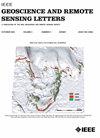基于标签噪声自适应全卷积神经网络的GIS监控建筑提取
IF 4
3区 地球科学
Q2 ENGINEERING, ELECTRICAL & ELECTRONIC
引用次数: 35
摘要
从航空或卫星图像中自动提取建筑物是许多应用的密集像素预测任务。它需要大量干净的标签数据来训练用于建筑物提取的深度神经网络。但是手动收集这样的像素注释数据是非常耗费人力的。幸运的是,地理信息系统(GIS)地图的建筑足迹数据提供了一种生成建筑标签数据的廉价方法,但由于GIS地图和图像之间的错位,这些标签是不完美的。在这封信中,我们考虑学习一个深度神经网络的任务,从这种有噪声的标签数据中逐像素标记图像,用于建筑物提取。为此,我们提出了一种通用的标签噪声自适应(NA)神经网络框架,该框架由一个基础网络和一个额外的概率转移模块(PTM)组成,该模块用于捕捉真实标签和噪声标签之间的关系。PTM的参数可以通过现成的反向传播算法作为整个网络的训练过程的一部分来估计。我们在真实世界的数据集上进行了实验,以证明我们提出的PTM可以更好地处理噪声标签,并提高在GIS地图生成的用于建筑物提取的噪声标签数据上训练的卷积神经网络(CNNs)的性能。实验结果表明,利用我们提出的用于完全CNN的PTM,它为减少人工标注工作量提供了一个很有前途的解决方案,用于从遥感图像中提取昂贵的目标。本文章由计算机程序翻译,如有差异,请以英文原文为准。
GIS-Supervised Building Extraction With Label Noise-Adaptive Fully Convolutional Neural Network
Automatic building extraction from aerial or satellite images is a dense pixel prediction task for many applications. It demands a large number of clean label data to train a deep neural network for building extraction. But it is labor expensive to collect such pixel-wise annotated data manually. Fortunately, the building footprint data of geographic information system (GIS) maps provide a cheap way of generating building label data, but these labels are imperfect due to misalignment between the GIS maps and images. In this letter, we consider the task of learning a deep neural network to label images pixel-wise from such noisy label data for building extraction. To this end, we propose a general label noise-adaptive (NA) neural network framework consisting of a base network followed by an additional probability transition modular (PTM) which is introduced to capture the relationship between the true label and the noisy label. The parameters of the PTM can be estimated as part of the training process of the whole network by the off-the-shelf backpropagation algorithm. We conduct experiments on real-world data set to demonstrate that our proposed PTM can better handle noisy labels and improve the performance of convolutional neural networks (CNNs) trained on the noisy label data generated by GIS maps for building extraction. The experimental results indicate that being armed with our proposed PTM for fully CNN, it provides a promising solution to reduce manual annotation effort for the labor-expensive object extraction tasks from remote sensing images.
求助全文
通过发布文献求助,成功后即可免费获取论文全文。
去求助
来源期刊

IEEE Geoscience and Remote Sensing Letters
工程技术-地球化学与地球物理
CiteScore
7.60
自引率
12.50%
发文量
1113
审稿时长
3.4 months
期刊介绍:
IEEE Geoscience and Remote Sensing Letters (GRSL) is a monthly publication for short papers (maximum length 5 pages) addressing new ideas and formative concepts in remote sensing as well as important new and timely results and concepts. Papers should relate to the theory, concepts and techniques of science and engineering as applied to sensing the earth, oceans, atmosphere, and space, and the processing, interpretation, and dissemination of this information. The technical content of papers must be both new and significant. Experimental data must be complete and include sufficient description of experimental apparatus, methods, and relevant experimental conditions. GRSL encourages the incorporation of "extended objects" or "multimedia" such as animations to enhance the shorter papers.
 求助内容:
求助内容: 应助结果提醒方式:
应助结果提醒方式:


